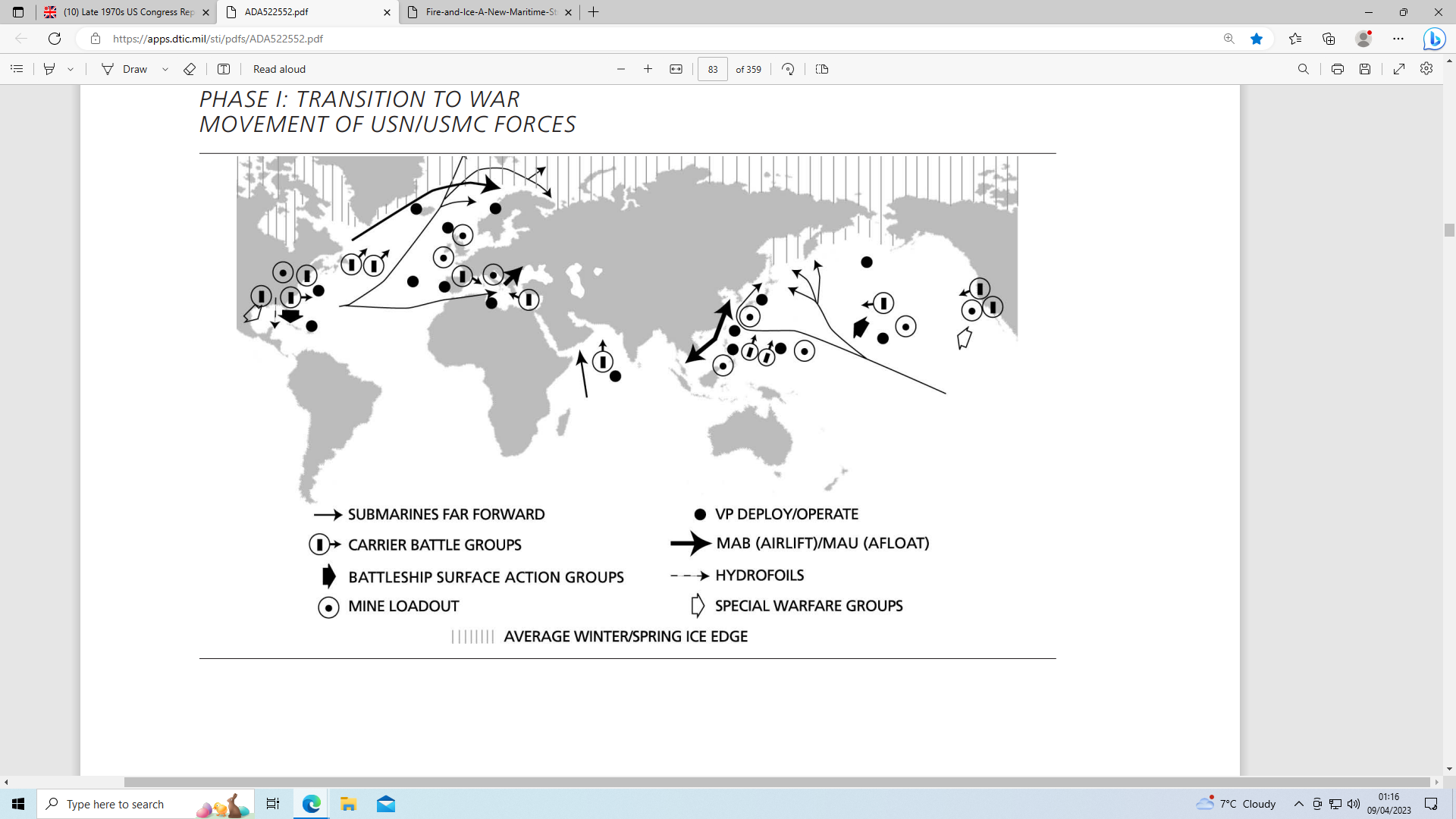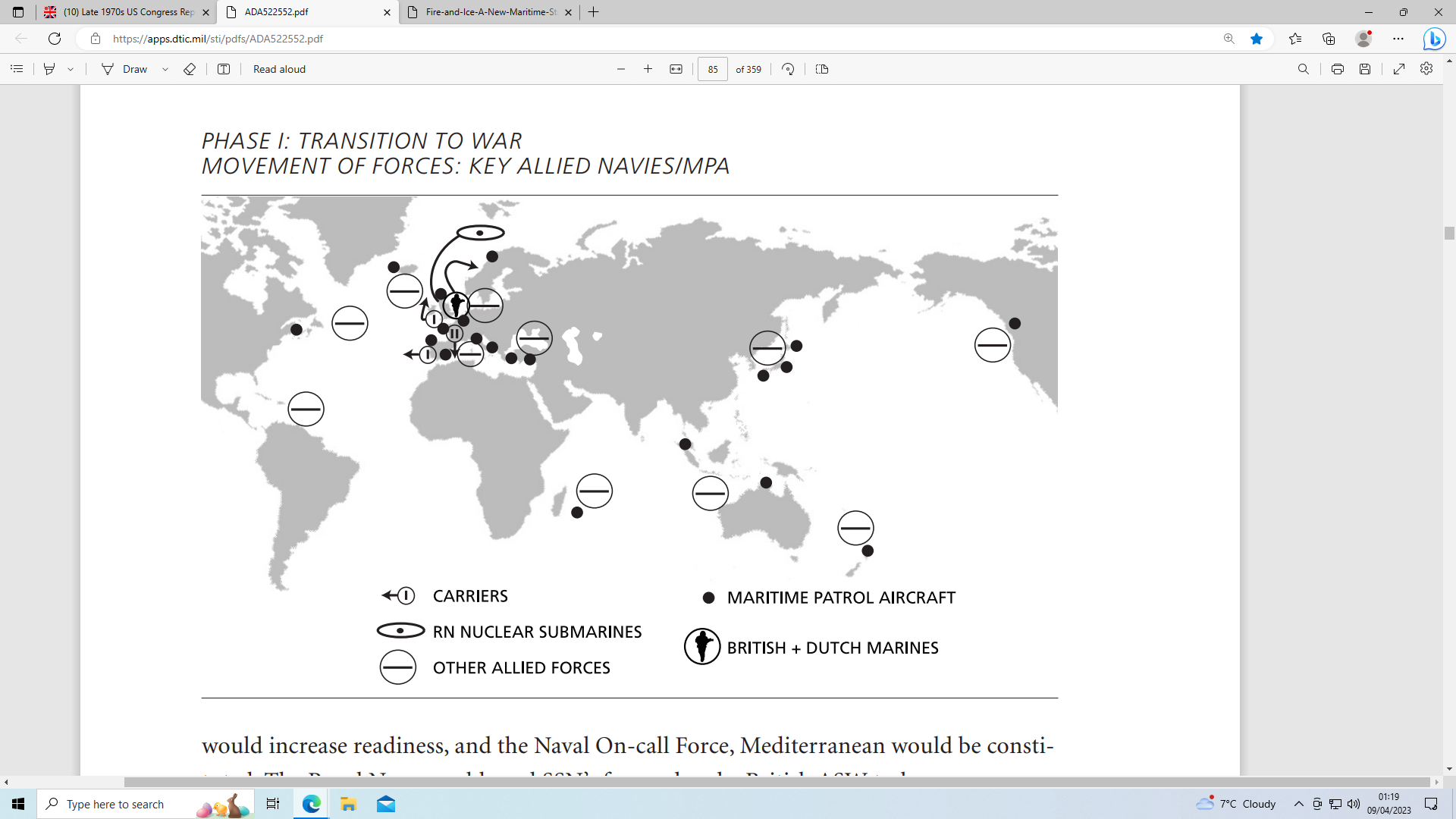Originally Posted by
WE Branch Fanatic
Once upon a time NATO started to see the GIUK Gap as being like the Maginot Line, which would have put NATO on the back foot and almost abandoned Norway. I am talking about the 1980s plans to put the carriers forward into the Norwegian Sea to fight the Bears and Backfires.
 The plan called for the forward deployment of carriers into the Norwegian Sea and amphibious forces to Norway during a period of tension, and allied contributions included the forward deployment of British SSNs up North, an ASW group centred one or two of our ASW carriers in the Eastern Atlantic, and amphibious forces being sent to Norway. Other non US contributions included a Spanish ASW group further to the South and a French carrier in the Mediterranean.
The plan called for the forward deployment of carriers into the Norwegian Sea and amphibious forces to Norway during a period of tension, and allied contributions included the forward deployment of British SSNs up North, an ASW group centred one or two of our ASW carriers in the Eastern Atlantic, and amphibious forces being sent to Norway. Other non US contributions included a Spanish ASW group further to the South and a French carrier in the Mediterranean.

Source:
U.S. Naval Strategy in the 1980s: Selected Documents
As for CVS/Sea King/Sea Harrier - you are right. The RN led ASW group was meant to be operating behind air cover from the USN Tomcats, if and when it went forward into the Norwegian Sea. This is why arguments saying that we should have built new carriers the same size as the
Invincible class were not sensible.
As for the SSGN menace - see
Kamikazes - The Soviet Legacy
SSGNs were evidently considered in the West to be the safest asset of the Soviet Navy during an attack, but it was not the case. The problem was hiding in the radio communications required: two hours prior to the launch, all the submarines of the PAD were forced to hold periscope depth and lift their high frequency-radio and satellite communication antennas up into the air, just to get the detailed targeting data from reconnaissance assets directly (not via the staffs ashore or afloat); targeting via low- or very-low-frequency cable antennas took too much time and necessarily involved shore transmitting installations, which could be destroyed at any moment. There was little attention paid to buoy communication systems (because of the considerable time under Arctic ice usual for Soviet submarines). Thus the telescoping antennas in a row with the periscopes at the top of the conning tower were the submarine’s only communication means with the proper radio bandwidth. Having all ten or fifteen boats in a PAD at shallow depth long before the salvo was not the best way to keep them secure. Also, the salvo itself had to be carried out in close coordination with the surface fleet and MRA divisions.
So that was two hours in which the Bear could be intercepted, and two hours in which the submarines were at periscope depth with masts up, and vulnerable to detection by airborne radars.
WEBF, this was 43 years ago! Hardly relevant to 2023, it was a different world.